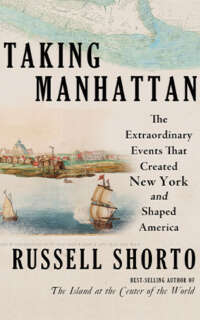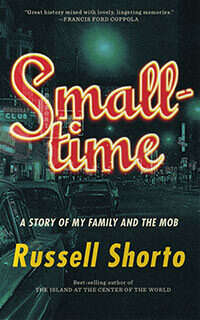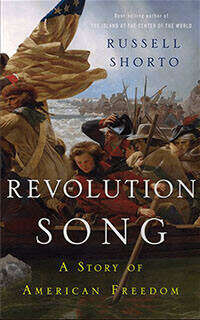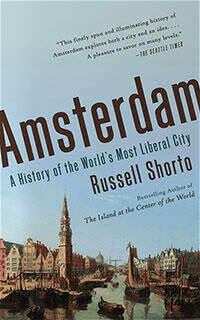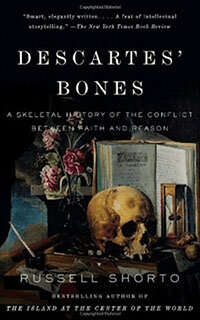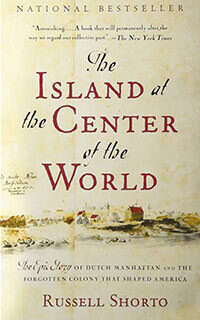“Slavery in New York”
New York Times Book Review
by Russell Shorto
March 19, 2006
HISTORICAL amnesia has always been with us: we just keep forgetting we have it. How is it that societies can block out or deny whole chunks of their past for which there may be cartloads’, libraries’, mass graves’ worth of reminders? Maybe this kind of knowing and not-knowing is a necessary thing for a people’s sanity: in order to move toward some decent future, we have to turn our gaze away. There are, of course, nastier possibilities.
On that note, here’s a news flash: The North had slaves too. It may have been banished in the 1860’s, but slavery has been booming in the past couple of decades as an area of amateur interest and professional inquiry, and recently historians have been exposing the howler that it was unique to the South. “Slavery in New York,” a profusely illustrated volume of essays produced by the New-York Historical Society to accompany its blockbuster exhibition of the same title, examines the complex situation that New York found itself in as a Northern slave city. (Full disclosure: after I had written this review, and without knowledge of it, the Historical Society asked me to join an advisory council, which I agreed to do.)
The 11 essays run roughly chronologically from the 17th century through the 19th, and cover not just slavery itself but the creation of black popular culture and an African-American elite in New York, and the drudge realities of life for most emancipated blacks. Much of the information has appeared in academic publications; pulling it together into an attractive package aimed at a popular audience will surely go a long way toward changing Americans’ ideas about where and what slavery was. The book is rich in detail, and it is important. It reveals layer upon layer of humdrum wickedness, and it shows how political doublespeak didn’t begin with the Clear Skies Act: “The Gradual Emancipation Law,” Ira Berlin and Leslie M. Harris write in their introduction, “freed not a single New York slave.”
The volume gets off to a slightly wobbly start. The Dutch period happens to be what I know best, so I was disappointed to find that Christopher Moore’s account of slavery in the colony of New Netherland contains numerous factual errors about the colony itself and drastically inflates the extent of slavery. There were about a dozen slaves in the early period, yet Moore has them building more or less the entire infrastructure of New Amsterdam. Later, he asserts, slaves were sent upriver to “the various patroonships and manors where they worked the fields along the Hudson River between Pavonia and Beverwijick” (actually Beverwijck). In fact, there were no patroonships or manors in the whole 150-mile stretch between those two towns; aside from the West India Company outpost of Wiltwijck (later Kingston), it was still the terrain of Indians.
Jill Lepore’s masterly essay on slavery in British New York counters the notion of a kind of Hudson River School prequel to the Southern plantation and at the same time gives a close-up view of conditions. While New York “was second only to Charleston, South Carolina, in its proportion of slaves in an urban population,” she writes, in 1703 the average New York slave owner had only 2.4 slaves, and “unlike large rural slave plantations, where slaves lived with their families in slave quarters well apart from whites, New York City slaves slept in the attics and cellars of their owners’ houses, or in ‘Negro kitchens,’ and worked all day alongside whites as servants, skilled artisans and day laborers.” Propinquity led to friction: there were two apparent slave revolts in Manhattan in the 18th century, and while it’s impossible to know for sure how much of the hubbub surrounding the one in 1741 was dreamed up by whites, Lepore says the city’s punishing slave code was a recipe for rebellion.
Slavery during the American Revolution was a nest of contradictions. Blacks were prominent in New York crowds in 1765 and 1768 protesting unfair British policies, yet white patriot leaders had no intention of extending the freedom they sought to the slaves. A “paradox existed within Revolutionary ideology,” Patrick Rael says: concern over property rights was one of the forces that drove colonists to revolt, and the same commitment to ownership principles also led many of the rebels, including many founders, to argue that it was wrong to take slaves from their owners.
Slavery ended in New York in 1827, but not really. Many Northern states hated to give it up (New Jersey still had some slaves in 1865), and New York City, which made enormous amounts of money from shipping Southern cotton, was virulently pro-slavery in the period leading up to the Civil War.
A book of scholarly essays may have as its currency arguments and data, but individual human beings embody the facts. For me the standout essay is Shane White’s account of the creation of black popular culture, which dotes fascinatingly on individuals. Henry Childs was part of a subgroup of blacks who “lived by telling fortunes or hustling — at this distance who can tell the difference?” and who seem to have entranced 19th-century whites in New York. Childs worked in tandem with a white man, revealing a surprising racial alliance. Other, nameless figures lived a grimmer truth. Tubmen — emptiers of privies, who worked by night — were almost always black. According to White, some tubmen, drunk on rum in the effort to numb themselves to their task, would spill their tubs’ ugly contents in the street, thus becoming doubly or triply objects of white scorn. The stink of slavery lingered long in the streets of New York.
SLAVERY IN NEW YORK
Edited by Ira Berlin and Leslie M. Harris.
Illustrated. 403 pp. The New-York Historical Society/The New Press. Paper, $25.
Russell Shorto is a contributing writer at The New York Times Magazine and the author of “The Island at the Center of the World.”
